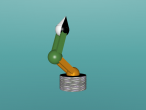Integrating Practical Estimation Skills in Engineering Education
Engineering education is evolving rapidly, with new technologies and teaching methods helping students grasp complex concepts more effectively. From virtual simulations to interactive labs, modern tools make learning both engaging and practical. Students today have access to software, modelling tools, and virtual experiments that make abstract concepts tangible and easier to understand.
One of the most valuable approaches is connecting classroom theory with real-world applications. Students who learn how to read construction blueprints, calculate material quantities, and plan projects gain hands-on skills that prepare them for professional engineering careers. Incorporating real project examples into coursework can bridge the gap between theory and practice, ensuring that students are ready for the challenges they will face in the industry.
Practical experience also encourages students to think critically about project management, resource allocation, and budgeting. By tackling simulated projects or analysing past case studies, students develop a better understanding of time management, cost estimation, and decision-making under real-world constraints. This kind of learning goes beyond textbooks and lectures, providing a deeper appreciation for the complexity of engineering projects.
Many programs now incorporate practical examples from the industry. Collaborating with professionals and learning from actual project data can significantly enhance understanding. For instance, students can study workflows and project planning from a bold takeoffs company in USA, giving them insight into how accurate estimates, material calculations, and project timelines are managed in real scenarios. This exposure helps students understand industry standards and develop skills that are immediately applicable after graduation.
Additionally, fostering problem-solving skills and teamwork is crucial. Assigning projects that simulate real-world challenges allows students to apply their knowledge, think critically, and collaborate effectively. Group projects, design challenges, and scenario-based assignments encourage communication, innovation, and adaptability, building confidence for future engineering roles.
Integrating technology such as virtual reality, simulation software, and collaborative platforms also enhances learning outcomes. These tools allow students to visualise complex systems, test different approaches, and learn from mistakes in a safe environment. The combination of hands-on experience, industry insights, and advanced technology prepares students to excel in both educational and professional settings.
What strategies or tools have you found most effective in teaching engineering concepts while preparing students for professional applications? Sharing your experiences can help improve engineering education for everyone, creating a stronger foundation for the engineers of tomorrow.
























